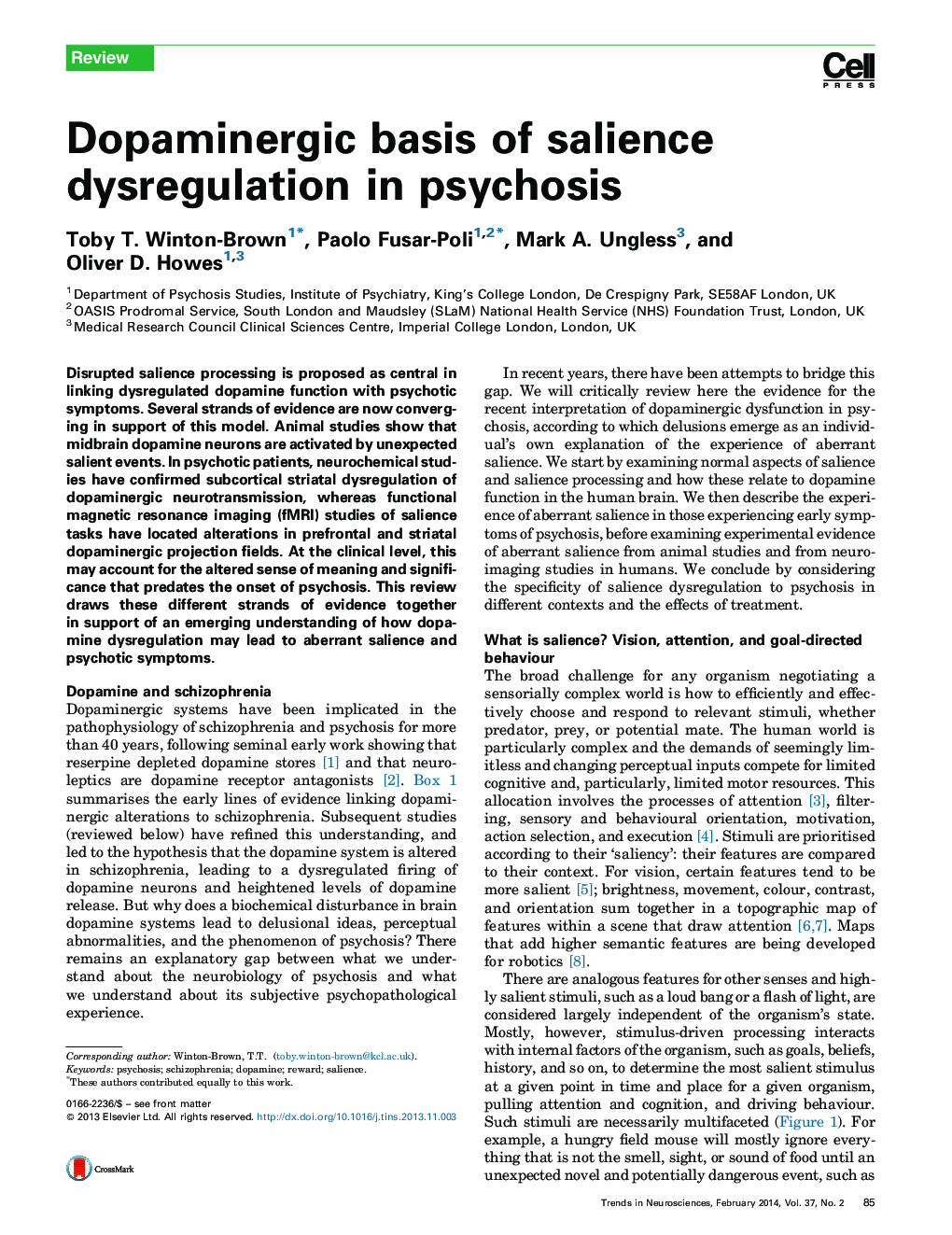| Article ID | Journal | Published Year | Pages | File Type |
|---|---|---|---|---|
| 4354202 | Trends in Neurosciences | 2014 | 10 Pages |
•Psychosis is typified by reality distortion and subcortical dopamine dysfunction.•The two may be linked through aberrant salience processing.•We review evidence for links between dopamine, salience, and psychosis.•We highlight the critical questions that remain and point to future directions.
Disrupted salience processing is proposed as central in linking dysregulated dopamine function with psychotic symptoms. Several strands of evidence are now converging in support of this model. Animal studies show that midbrain dopamine neurons are activated by unexpected salient events. In psychotic patients, neurochemical studies have confirmed subcortical striatal dysregulation of dopaminergic neurotransmission, whereas functional magnetic resonance imaging (fMRI) studies of salience tasks have located alterations in prefrontal and striatal dopaminergic projection fields. At the clinical level, this may account for the altered sense of meaning and significance that predates the onset of psychosis. This review draws these different strands of evidence together in support of an emerging understanding of how dopamine dysregulation may lead to aberrant salience and psychotic symptoms.
